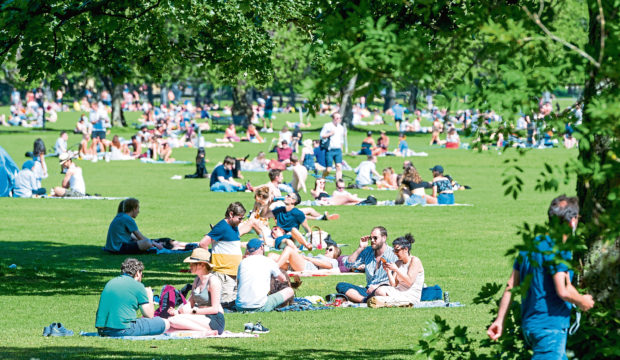The news is good. From London, Health Secretary Matt Hancock said the UK has the lowest number of Covid deaths, the lowest incidence of infections and the lowest occupancy of ICU beds since the lockdown began.
The contact tracing system is working, we are assured, and the gradual return to normal has not seen the new surge in transmissions some predicted.
In most of continental Europe, which eased its pandemic restrictions several weeks ahead of us, people are lapping up their new-found freedoms in cafés and bars, apparently without ill effects.
It may be too early to be overly optimistic but the signs are that governments and scientists the world over have paced the aftermath of this frightening pandemic about right.
Measures remain in place, of course, to remind us of the ordeal of the past months, but there is light at the end of the long tunnel.
Except in Scotland. Although this country, too, has survived the worst of the virus, with just one death reported on Monday, and has belatedly begun to emerge from its restraints, our reprieve may be shortlived.
Nicola Sturgeon, forgetting she had promised to treat her countrymen as grown-ups, issued an extraordinary reprimand at Monday’s Covid briefing.
Citing evidence from the sunny weekend that suggested the public was embracing liberty too literally, she threatened to lock us all up again.
Permission, granted late last week, to travel five miles had seen visitors invade beauty spots such as Loch Lomond and Glen Coe.
Road use on Sunday was up by 70% on the previous week, and relaxing the rules to allow outdoor meetings with loved ones had resulted in packed beaches and parks. The police said they had issued almost 800 dispersal notices on Saturday.
“If there is continued evidence of even a minority not abiding by these guidelines and travelling unnecessarily, if people meet up in larger groups or if they’re making journeys which risk spreading this virus, we will have to put these restrictions on group size and travel distance into law,” said a clearly riled first minister.
Last week, she displayed similar frustration at public disobedience, a sign either of a politician at breaking point or an authoritarian accustomed to getting her own way.
Based on past form, I think we can safely go with the latter. Sturgeon may not have enjoyed the usual SNP discipline recently – quite the opposite, in fact, as the fighting nationalist factions prepare for all-out war once the pandemic has passed.
But what she has been afforded from most of the country during the corona crisis is great respect and near total observance of her cautious Covid-19 strategy.
Now that the mood has turned and people no longer believe she has a monopoly on common sense, she is hopping mad.
Partly this is due to a loss of face but perhaps it is also because she is reminded that power, especially the absolute sort she craves, is transient.
Nationalists love to dictate – what to think, who to like, and how to live. Coronavirus has almost justified their dearest wish, to close Scotland’s borders to the English and accentuate a difference that does not exist.
In many ways, the lockdown has given Sturgeon – once she had decided to break with the four nations approach – a brief taste of what she hoped an independence referendum would deliver.
But Scots are not playing along. They tend to look beyond their own back fences and see what other Britons are doing, and other Europeans, and take their lead from them.
They didn’t appreciate having to wait longer than their southern neighbours to visit garden centres and golf courses.
And maybe they noticed – hard not to – that their nanny state was making more than its fair share of Covid mistakes, particularly over the appalling treatment of care home residents and staff.
Sturgeon is right to issue warnings about flouting the guidelines; we don’t know for sure yet that we are in the clear.
But she is wrong to try to turn back the clock. Police in Scotland have already said they would not be stopping drivers suspected of infringing the five-mile limit, and now the Scottish Police Federation has dismissed her threat of legislation as “unenforceable”.
Obviously Sturgeon didn’t think to consult the police first about measures only their officers could implement.
That speaks volumes about her “do as I say” style of governance, and also exposes the chink in her armour.
When she is winning, she is seemingly invincible but the tide has turned – for the pandemic, let’s hope, but for her leadership too, which is coming under ever greater scrutiny.
In the next stage of this drama, her handling of the country’s exit may well shape her own.


